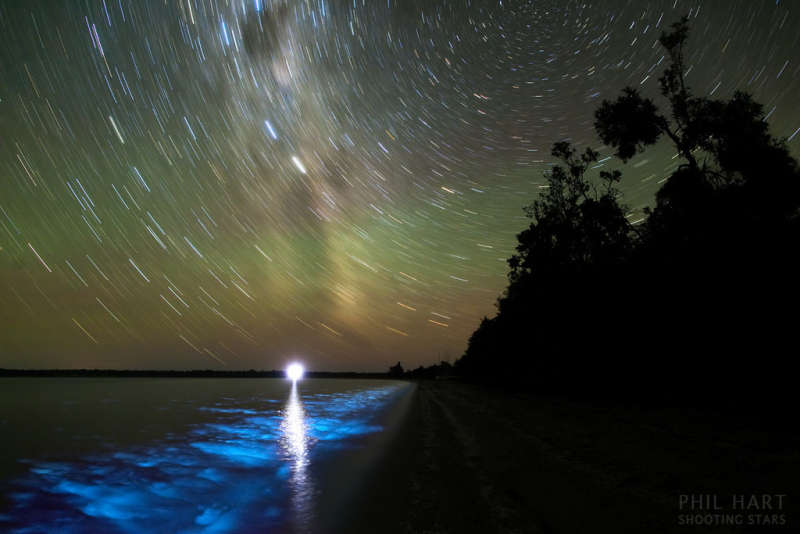
|
Credit & Copyright: Phil Hart
Explanation:
What shines in
the world
at night?
Just visible to the eye, a rare electric blue glow spread
along the shores of Victoria Lake on January 16, 2013.
Against reflections of a light near the horizon,
this digitally stacked long exposure
recorded the bioluminescence
of noctiluca scintillans,
plankton stimulated by the lapping waves.
Above, the night skies of the Gippsland Lakes
region, Victoria, Australia shine with a fainter
greenish airglow.
Oxygen atoms in the upper atmosphere, initially
excited by ultraviolet sunlight, produce the more widely seen fading
atmospheric
chemiluminescence.
Washed out by the Earth's rotation, the faint band
of the southern summer Milky Way stretches from the horizon
as star trails circle the South Celestial Pole.
Watch:
Meteors vs. Supermoon
|
January February March April May June July August September October November December |
| ||||||||||||||||||||||||||||||||||||||||||||||||
NASA Web Site Statements, Warnings, and Disclaimers
NASA Official: Jay Norris. Specific rights apply.
A service of: LHEA at NASA / GSFC
& Michigan Tech. U.
Based on Astronomy Picture
Of the Day
Publications with keywords: night sky
Publications with words: night sky
See also:
- APOD: 2025 July 1 Á Eye Sky a Dragon
- APOD: 2025 April 23 Á An Almost Everything Sky
- APOD: 2024 September 11 Á A Night Sky over the Tatra Mountains
- APOD: 2023 August 15 Á A Triply Glowing Night Sky over Iceland
- Sunset to Sunrise over the Baltic Sea
- An Artful Sky over Lofoten Islands
- A Furious Sky over Mount Shasta
